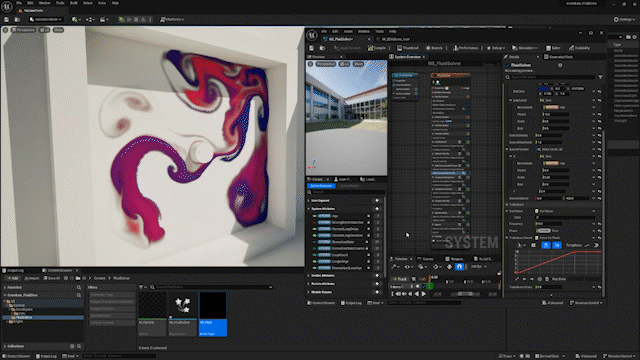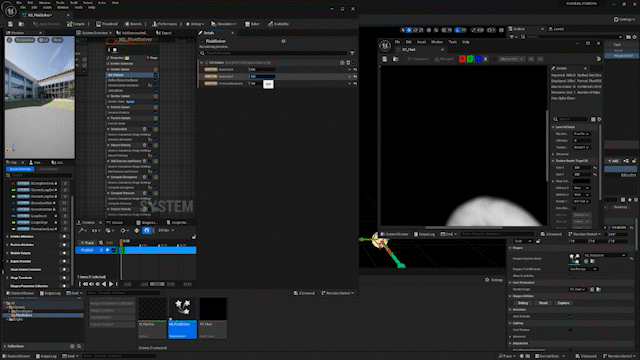I am thrilled to announce the release of the first chapters of my newest video tutorial series: "Building a Fluid Solver in Niagara". This series is a deep dive into the fascinating world of fluid dynamics, harnessing the power of Unreal Engine 5.3.
In these tutorials, we'll embark on an enlightening journey to create our very own fluid solver from scratch. Whether you're a budding game developer, a VFX artist, or just a curious learner, this series is designed to enhance your skills and ignite your creativity.
Here's a sneak at some of the Topics:
Navier Stokes Equations: We start with the heart of fluid dynamics, exploring these fundamental equations to understand fluid flow.
Emitter Setup: We'll build the framework of the fluid solver in a Niagara Emitter using Simulation Stages.
Sourcing: Learn how to source fluid into the simulation, a critical component for dynamic fluid effects.
Divergence: Learn how to calculate the Divergence from Velocity.
Pressure: Learn how to solve for pressure, the most crucial (and expensive) part of the fluid solver.
Advection and Projection: Explore the techniques of advection and projection to create realistic fluid movement.
Open Boundaries: Tackle the challenge of simulating open boundaries, essential for natural-looking fluids.
Collision: Understand how to incorporate collisions, a key element for interactive fluid simulations.
Closed Boundaries: Master the art of dealing with closed boundaries, crucial for controlled fluid environments.
Turbulence: Add complexity to your simulations with turbulence, bringing a touch of realism and detail to your fluids.
Dissipation: Learn about dissipation of the fluid density, essential for interesting looking continuous flows.
Color: We explore how to bring your simulations to life with color, enhancing the visual appeal of your fluids.
Rendering: We'll use Heterogeneous Volumes to give our 2D fluid sim a 3D look that can receive lights and cast shadows on itself.
Each chapter is packed with detailed instructions. Watch and learn as I create a solver entirely from scratch. My aim is to make this complex subject approachable and enjoyable for everyone.
I've wanted to make a training series like this for a while now, and I can't wait to share it with you. The journey we're about to embark on is not just about learning a tool but understanding the art and science behind stunning visual effects.
With your continued support, I'll be expanding the series with new chapters on performance optimization techniques, particle sourcing, rendering improvements, viscosity and temperature fields, and a few practical use-case examples.
Stay tuned for more chapters, and get ready to dive into the world of fluid dynamics with "Building a Fluid Solver in Niagara."
Thank you for your support!
Ryan


